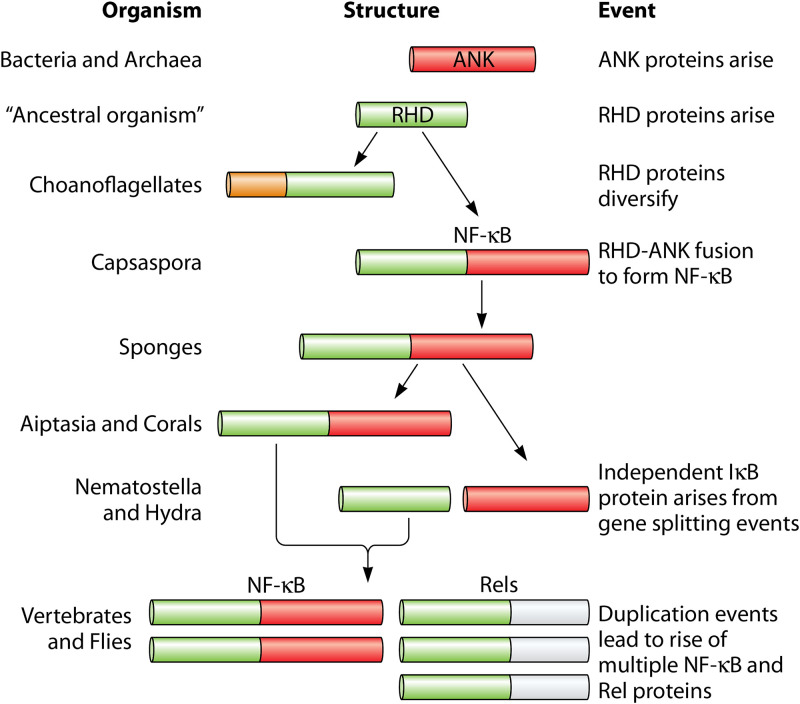FIG 3.
Evolution of NF-κB. Prior to the rise of holozoan life, ankyrin (ANK) repeats (red) were present in bacteria and archaea. The appearance of an RHD-containing protein (green) likely led to RHD-only proteins that diversified in choanoflagellates and to an RHD-ANK fusion in an ancestor of Capsaspora. Metazoans generally retained the full-length NF-κB fusion protein, although in some cnidarians (e.g., Hydra and Nematostella) there were gene-splitting events that created separate RHD and ANK repeat proteins. Eventually, a series of duplication events gave rise to the multiple NF-κB and Rel proteins that are present in vertebrates and flies.

